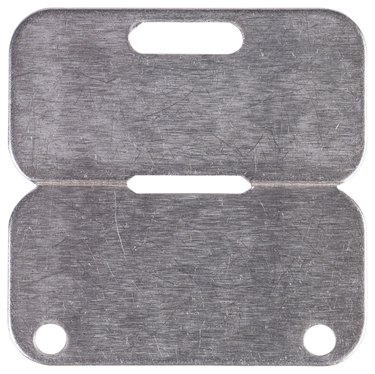Things You'll Need
Safety glasses
Heavy leather gloves
Sheet steel
Permanent marker
Vice
Jig saw or band saw
Files
Hammer

Shaping steel is a form of metal work used for things ranging from custom made knives and swords to car restoration. Steel is an alloy made mostly of iron, and when heat treated and tempered becomes strong and less prone to fracture. There are many methods for shaping steel, from primitive hand methods to use of custom made presses or roller machines. Shaping steel is a craft that requires some experience to perfect it and with practice can become a well-learned skill in time.
Step 1
Trace the outline of the shape you need to cut from the steel with a permanent marker. You can use a stencil, mark lines with a straight edge from measurements or trace a template. Depending on the application the end size of the piece may change depending on how you work the metal, so keep this in mind.
Video of the Day
Step 2
Put on a pair of leather gloves and wear safety glasses when cutting metal of any kind.
Step 3
To use a jig saw, clamp the piece of steel into a vice, making sure the cutting area is free of obstructions. Cut the steel using the jig saw on high speed. Stop frequently and lubricate the blade if necessary to avoid it overheating.
Step 4
Cut the metal on a band saw as an alternative. Guide the steel through the cuts, keeping your hands clear of the saw while cutting. A band saw works the opposite of a jig saw, the saw is stationary and the metal moves instead.
Step 5
Create curves in the steel by using a hammer and form or a mechanical roller machine if you have one. A roller machine clamps the metal between a hard metal form, usually a humped shape, and a heavy duty roller. Rolling the sheet back and forth by hand curves and thins the metal as you guide it into the shape you want.
Step 6
Place a metal form beneath the steel, for example, the cone-shaped end of an anvil. Use the hammer to pound the steel around the curve, thinning and shaping the metal as you go. It takes time to get a smooth curve and work the metal into shape.
Step 7
Trim the edges and file where necessary to smooth them down for your piece. If you are making a knife you will hone the edge to a sharp point. For sculpture or machine parts and car replacement sheet metal the edges will be blunt. Use the file to remove any burrs or imperfections on the edges.
Warning
Always wear safety glasses and leather gloves when working with jig saws, band saws and metal of any kind.
Video of the Day